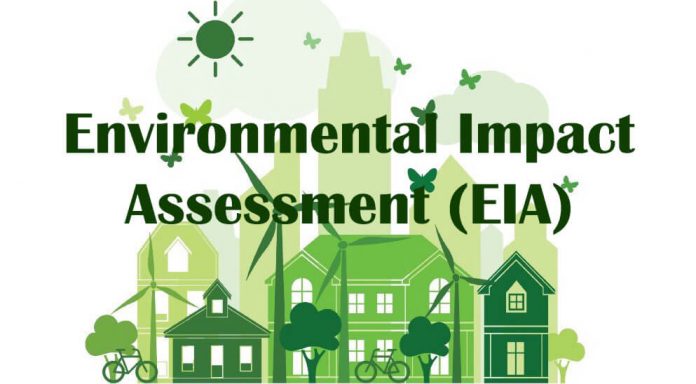This article is written by Varchaswa Dubey from JECRC University, Jaipur. This article reflects the comparative analysis based on the research undertaken by the author. The article also aims at providing a better understanding of the EIA draft, 2020 and the IAA, 2019.
Table of Contents
Introduction
Environmental Impact Assessment (EIA) is “a systematic and integrative process for considering possible impacts before a decision being taken on whether or not a proposal should be approved to proceed”. EIA estimates the impacts of the proposed projects on the environment. It also evaluates the different aspects of the proposed project concerning the environment and alternatives of the project which shall preserve the environment.
Impact Assessment Act refers to the new set of rules and regulations in Canada which lays down the procedure, timelines, factors, compliance, and participation mechanisms of impact assessment. The act aims to meet its environmental obligations and its commitments in respect of climate change.
Origins of the drafts
The history of environmental impact assessment can be traced back to the United States of America where the US passed the National Environmental Policy Act of 1969 intending to encourage productivity among humans and the environment and to prevent the factors which will cause damage to the environment, biosphere, health, and welfare of humans.
In India, the roots of EIA are influenced by the National Environmental Policy Act, 1970, which most of the nations in the world have signed and adopted to preserve their environment. The EIA, 2020 is proposed to repeal and replace Environmental Impact Assessment, 2006 and make amendments to the Environment (Protection) Act, 1986. In the case of Sterlite Industries Ltd. v. Union Of India (2013), the Supreme Court of India highlighted the grounds on which administrative actions could be challenged and emphasised the impacts of the acts on the environment.
The roots of the Impact Assessment Act, 2019 can be traced back to the Canadian Environmental Assessment Act, 2012, which lays down the procedure, timelines, factors, compliance, and participation mechanisms of impact assessment.
What is the EIA draft, 2020
The EIA draft is the procedure falling under the Environment (Protection) Act, 1986 which ceases the industries and other projects from operating without proper site analysis where such a project is proposed to be established. The draft also aims at improving and preserving the quality of the environment.
The procedure enshrined under EIA endeavours that every small or big project must go through a rigid process undertaken to allow the industries to operate without having any impact on the environment.
The projects falling within the scope of EIA are coal and minerals, infrastructure development, thermal, nuclear, real estate, hydropower, and other industrial projects.
The EIA is a significant procedure for the evaluation of the impact on the environment caused by the proposed projects. In this process views of different people are taken into account before giving the authority to the projects to begin operating.
Under the 2020 draft, according to the notification of the government of India, the draft is enacted to make the procedure of the EIA more transparent by the introduction of the digital system, in online mode. However, some environmentalists claim that such a draft will weaken the traditional EIA procedure.
What is the environmental impact statement?
Environmental impact statement refers to the statement prepared when there is a proposal of an industry or infrastructure:
- Time description of the proposed plan : It includes the tentative time required in construction, the operation period of the industry, and when such industry is supposed to be shut down, and what are the alternatives of the proposed industry.
- Nature and effects on the environment : It includes determining the nature of the project and what are going to be the aftereffects of the proposed project.
- The chances of natural calamities : The possibilities of natural calamities, especially earthquakes, are determined in the area where a project is proposed.
- Quality of the soil, water, and air : The quality of the said factors is essential to determine because good soil, water, and air are not only the concerns of the government but also of industries.
- Impact on wildlife : The effects on vegetation, wildlife, and other species located around the area of industries should also be preserved and therefore, an industry may not be allowed to operate if it is determined that its operation will destroy the flora and fauna.
- Economic efficiency : To get the maximum results from the establishment of a project, the project must be economically beneficial for the government and the industry or the project itself.
- Human resources : Human resources refer to the availability of the humans who shall operate in the industry and, if it is foreseeable that human resources may be a problem or may cause problems to the environment, then such industry may not be allowed to operate.
- Pollution : The proposed project must clearly state that no pollution will be caused by such industry, like air, noise, and water pollution.
What are the objectives of EIA, 2020
The draft aims at:
- Determining, analyzing, predicting, and authorizing the overall effects of activities that are proposed to be established at a particular place regarding the environment of the respective place.
- It identifies the aftereffects of any project or activity which shall affect the environment if the authority is given to such agency or company to operate.
- It promotes the safeguarding of the environment by preventing the industries from operating in a manner that will degrade the environmental conditions of a place.
Critical analysis of the EIA, 2020
- Post-facto clearance: The EIA reserves the practice of post-facto clearance, which means that despite a project or industry operating without any environmental safeguards, or in the absence of any clearance from the government, the industry shall be allowed to operate under the jurisdictions of EIA, 2020. It also means that if any violation is being caused by the industries or projects, then there are high chances of such industries getting away without any liability.
Such provisions are very likely to destroy innocent human lives, like the Visakhapatnam gas leak where an LG polymer plant has been operating without any environmental clearance, taking away the lives of 12 and affecting hundreds of others. The infamous Union Carbide Corporation v. Union Of India (1989) (Bhopal gas tragedy) which was responsible for more than 15,000 lives was also a result of poor environmental safeguards and improper machines.
- The 2020 draft is likely to hinder the voice of those communities who will be directly affected by the environmental degradation which shall result in poor living and health conditions. The role of the public was significant in the process of EIA as whenever there was a proposal for a project or industry, the public’s opinions were always taken into consideration before allowing the projects to operate.
- Another grave concern is the exception of more than 40 types of exceptional projects which do not require any environmental clearance of any kind, including the activities of clay or sand by manual mining, digging of well for irrigation or drinking water purpose, coal, and non-coal mineral prospecting, etc.
In the case of Keystone Realtors Pvt. Ltd V. Shri Anil v. Tharthare & Ors. (2019), The Supreme Court of India held that the draft amendment was not adopted in subsequent amendments to the EIA Notification. It assists the officials in not just evaluating and mitigating the impacts but also in accessing the compliance of the obligations.
What is IAA, 2019
The Impact Assessment Agency is established to prepare and have a tool to assess the aspects of environmental projects and how they shall affect the health, social life, and economy of the country. The IAA bestows a procedure for evaluating the impacts of major projects which are being operated in Canada.
The Impact Assessment Agency of Canada is the competent authority that is responsible for the working of the projects which are being carried out in Canada on their watch, and the agency directly reports to the Minister of Environment of Canada.
What are the objectives of IAA, 2019
- To encourage sustainability and rights of citizens, especially the right to have a clean environment.
- To bestow a reasonable and fair procedure concerning the impact assessment which shall promote competitiveness and innovation among projects.
- To prevent any foreseeable damages which shall take place due to poor working of the industries allowed to operate without any prior assessment.
- To ensure the effectiveness of the established industries do not violate the rights of citizens to have a clean environment, and especially those who reside near industrial areas.
What is the process of IAA, 2019
Phase 1 – planning
It is a stage of 180 days where the proposed project is introduced to the impact assessment procedure, and concerned people determine the issues and problems with the proposed project (if any). It also gives brief details about the proposed project and responses to issues that arise against the proposed project.
Phase 2 – impact statement
This stage stretches from 180 days to 3 years max and determines and evaluates the impacts of the proposed projects and a statement is prepared by the agency concerning the guidelines met by the proposed projects.
Phase 3 – impact assessment
It is a stage of 300 days max where the impacts of the proposed project are considered with the sustainability of the proposed project. Also, it considers the factors like rights of those who may get affected by the proposed project, knowledge, and culture, etc.
Defined in Section 22(1) of the IAA, the factors which are considered in impact assessment are the purpose and need of the project, alternatives available for the project, knowledge provided to the indigenous people, to what extent the project shall be sustainable, change in the project caused by the environment, comments of public, etc.
Phase 4 – decision making
It is a phase of 90 days where adverse effects, whether direct or incidental, which violate the rights of the public are determined by the environment minister or by the governor in council according to Section 60(1) and Section 62 of the IAA, 2019, and such evaluation must be in the best interest of the public, according to Section 63.
Phase 5 – post decision
This stage objects to the accuracy of the impact assessment report laid down and verify the steps which shall be taken to make the assessment more effective. The decisions taken before this stage may be amended by the Minister of Environment, including to add or remove a condition present, according to Section 68(1) of the IAA, 2019.
Critical analysis of the IAA
The IAA, 2019 has repealed the Canadian Environmental Assessment Act, 2012 which was also the main legislation concerning the protection of the environment in Canada region-wise. The drawbacks of IAA are:
- The IAA, 2019 has not only stretched the powers of the only environmental agency in the country but also has placed more responsibilities on the agency, which makes the agency responsible for any negative impacts on the environment.
- Currently, more than 70 projects are being operated under the IAA, including renewable energy, oil and gas, marine and freshwater, mining, nuclear, hazardous waste, federal lands, etc., and most of the projects.
- The introduction of the early planning phase refers to the communication with people and the public at large which shall be affected by the proposed projects, however, such phase not only makes the process lengthy, and exhausting government and private funds, but also it may promote corruption and suppression of the voice of those who may get affected by the proposed projects.
- The main issue with the IAA, 2019 is the absence of compulsory requirements for strategic and regional assessment, and merely conducting assessments fails to consider the after-effects which follow the establishment of a project causing degradation of the environment.
- The provision of public participation is vague and does not provide compulsory public participation at all stages of a project, further, the rights of indigenous people may get affected due to poor legal framework.
Comparative analysis of EIA, 2020 and IAA, 2019
Objectives of EIA, 2020 and IAA, 2019
The EIA, 2020 was drafted with the objective of economic development in India, however, to achieve this, India has made a significant number of compromises since India has fallen to 168/180 in the Environmental Performance Index, 2020. Although the 2020 draft was enacted with the purpose of making the process more transparent, the draft was criticised because it ignores environmental protection, international laws, etc.
The IAA, 2019, was drafted with the aim of inserting new legislation concerning environmental laws replacing the 2012 legislation. The 2019 legislation provides procedures, factors, etc. concerning environmental protection in Canada. Canada ranks 20 in the Environmental Performance Index, 2020.
Classification of projects under EIA, 2020 and IAA, 2019
The EIA, 2020 categorizes the project through different phases like A, B1, and B2. This categorization is based on the type of project, the impact of the project on the environment, area required by the project, and the conditions, if any required to be applied in the project.
The IAA, 2019 on the other hand, all the projects which are under the jurisdiction of the 2019 legislation come under the project list which describes all the physical activities that shall be a designated project and requires an impact assessment. The list contains all the physical activities which shall fall within the jurisdictions of the Minister of Environment. The projects under IAA are categorized into 5 different phases, i.e. planning, impact statement, impact assessment, decision making, and post-decision.
Community engagement under EIA, 2020 and IAA, 2019
The EIA, 2020, takes community engagement under consideration and a significant aspect under the EIA, 2020 is that it prepares an environmental impact statement before allowing industry to operate. A statement of issues that are raised by the public is also prepared in the local language or the official language of the state however the draft does not provide much scope for community engagement compared to the earlier draft.
The IAA, 2019 on the other hand, in its Preamble highlights the importance of public participation in the impact assessment process, including the planning phase and it states that the public should have access to reasons concerning decisions related to impact assessment. The assessment under the planning phase is of 180 days, where public opinions are considered, where the public raises its issues concerning the proposed project.
What is the legal framework concerning the right to the environment
The right to have a clean and healthy environment is one of the basic requirements of human rights since no human right can be enforced without a clean environment, and therefore it is vital on the part of the state to provide its citizens with a clean and healthy environment.
The mainstream legislation regarding the right to a clean environment is the Stockholm Declaration, 1972, which states that – “Man is both creature and moulder of his environment, which gives him physical sustenance and affords him the opportunity for intellectual, moral, social and spiritual growth.” The Stockholm Declaration bestows a fundamental right to freedom, equality, and adequate conditions of life, in an environment that allows a lifestyle of dignity and well-being. It also places a responsibility on humans that only they are responsible for the protection and improvement of the environment for themselves and future generations.
The Rio Declaration on Environment and Development, 1992 also aims at international agreements among the states which shall promote the protection of the environment. The Rio declaration also states that humans are entitled to a healthy and productive life in harmony with nature and places a responsibility on the state to only exploit its resources to an extent that its activities do not cause damage to the environment.
The International Covenant on Economic, Social, and Cultural Rights, 1966 also refers to the improvement of all aspects of environmental and industrial hygiene.
The Convention on the Rights of the Child also places a duty on the state to tackle disease and malnutrition, including primary health care, and make available adequate nutritious foods and clean drinking water, considering the risks of environmental pollution.
The Indigenous and Tribal Peoples Convention, 1989 states that special measures must be taken to safeguard the persons, institutions, property, labour, culture, and environment of the concerned people.
Conclusion
By analyzing both the policies it can be determined that both the policies lack one or another factor which results in poor environmental conditions in the jurisdictions of both policies. Although the EIA is a broader and widely accepted policy in nature, it still lacks certain factors which are to be rectified by the concerned states.
The IAA, on the other hand, has jurisdiction only in Canada and yet still lacks certain parameters which shall affect the environment of the country.
It can be underscored that both the policies lack one aspect or other and none of the policies have resulted in improved environmental conditions, in fact, the EIA, 2020, shall have more adverse effects compared to IAA, 2019.
References
- https://www.canada.ca/en/impact-assessment-agency/corporate/mandate/president-transition-book-2019/iaac.html
- https://www.canada.ca/content/dam/iaac-acei/documents/mandate/president-transition-book-2019/overview-impact-assessment-act.pdf
- https://www.wcel.org/blog/canadas-proposed-new-impact-assessment-act-good-afar-far-good
- https://cprindia.org/sites/default/files/Reduced%20Regulations%20and%20Increased%20Exemptions_Part%20I_30.07.pdf
- https://blog.ipleaders.in/environmental-impact-assessment-notification-2020/
- https://thelawblog.in/2020/11/05/comparative-analysis-eia-draft-2020-v-iaa-2019/
- https://www.who.int/hhr/information/Human_Rights_Health_and_Environmental_Protection.pdf
LawSikho has created a telegram group for exchanging legal knowledge, referrals, and various opportunities. You can click on this link and join:
https://t.me/joinchat/J_0YrBa4IBSHdpuTfQO_sA
Follow us on Instagram and subscribe to our YouTube channel for more amazing legal content.












